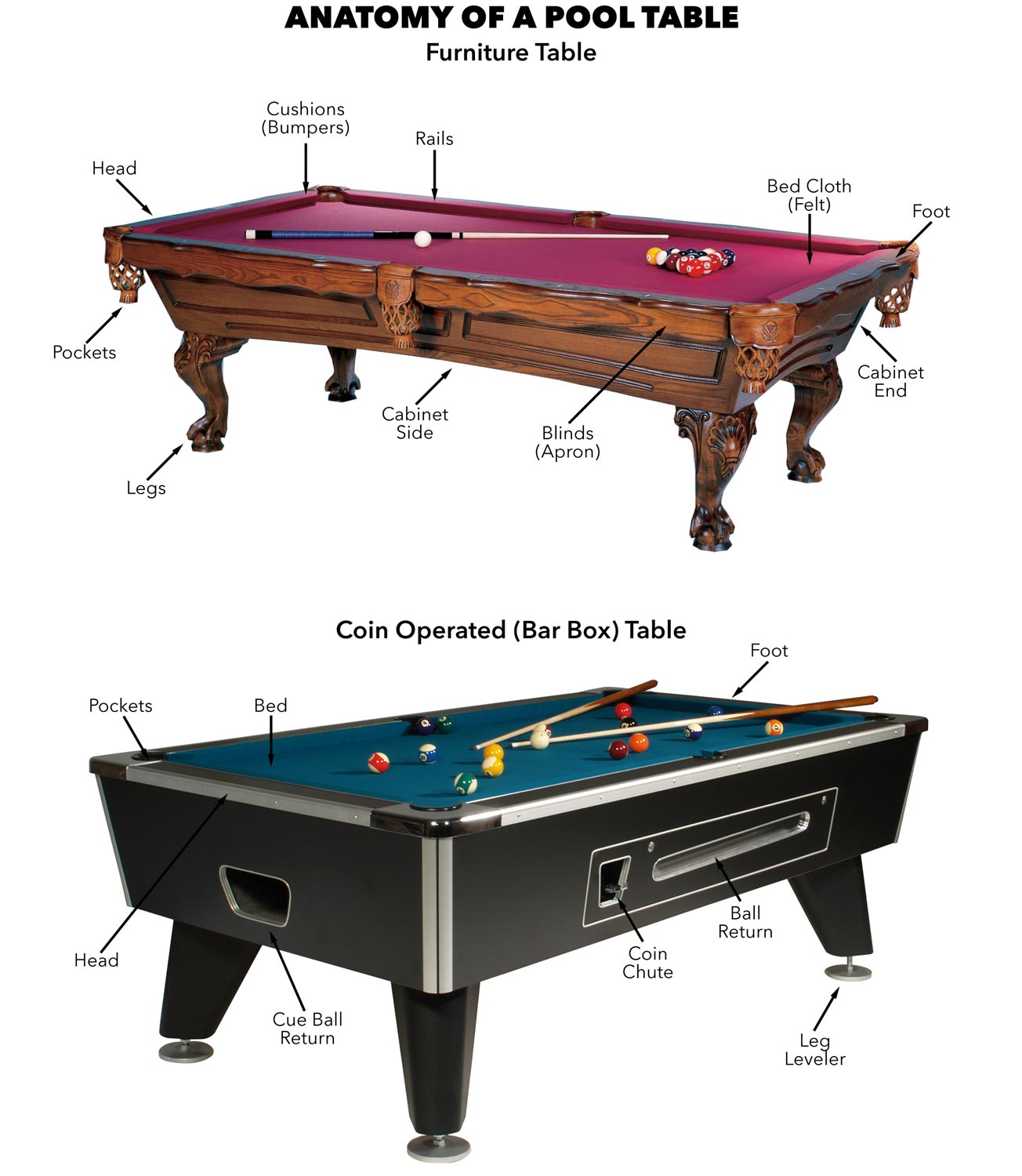Anatomy of a Pool Table

Have you ever wondered what a certain part of a pool table is called or needed to replace a part but don't know the name of it?
We have put together the following infographic to help you get to know your pool table better.
There are three main types of pool tables commonly used for pocket billiards in the United States.
A furniture table is most often found in homes, and can be an exquisite family heirloom. It usually has a decoratively designed wood cabinet along with leather drop pockets. The most common size for a home table is 8 foot when measuring the playing surface.
A coin-operated (often called a "bar box") table is found in your pool halls, bars, clubs, resorts and all sorts of other areas that might allow and/or promote recreational activities. It allows people to pay for individual games. The most common size for a coin-operated table is 7 foot when measuring the playing surface.
A commercial table is what you will find in pool rooms and billiard parlors all across the world. These tables are usually sleek in appearance and designed for performance and durability in commercial and tournament environments. They generally use drop pockets instead of ball return systems like coin-op tables and will often be covered with tournament style worsted cloth. The most common size for a commercial table is 9 foot when measuring the playing surface.
- Head - the end of the table that you place the cue ball at to break
- Foot - the end of the table that you place the racked billiard balls for breaking
- Cushions - also known as rail cushions or bumpers
- Rails - what the cushions are attached too. Sometimes used to refer to the cloth that covers the cushions.
- Bed Cloth - also known as pool table felt, the cloth that covers the slate playing surface
- Bed - the playing surface, typically made of slate
- Cabinet End/Side - main "body" of the pool table that supports the slate top
- Blinds - "side" of the top rail, usually attached underneath the rail
- Legs - elevates the pool table for play and supports the cabinet
- Leg Levelers - help to level the table for consistent play
- Pockets - where the balls fall. Can be made of leather.
